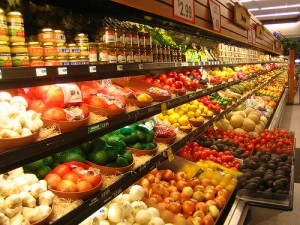 As a parent, you’re probably concerned about pesticides on the foods your family eats. I know I am.
As a parent, you’re probably concerned about pesticides on the foods your family eats. I know I am.
Since the Environmental Working Group came out with their list of the “Dirty Dozen“, I’m more selective about our produce purchases. We even grew a few rows of kale in our raised bed gardens because we eat copious amounts of greens.
But just because a favorite veggie didn’t end up on EWG’s list doesn’t mean that it’s free and clear. Certainly not organic, in most cases!
An average American child gets 5+ servings of pesticides in their food and water per day.
Yikes! That’s why this frightening educational new database is so helpful.
[social_buttons]
What’s On My Food? is a project of the Pesticide Action Network.
Pesticides are the linchpin of industrialized agriculture.
On this site, not only can you find grown goods such as asparagus, cranberries, and watermelon, you can even get the chemical content of meat and grains! Bottled water? Check? Rice? Check. Pork muscle, poultry breast, and beef liver? Check, check, and check.
Of course, eating locally can help solve this problem for a few reasons. First off and unfortunately, if I pick up half a peck of peaches from up the road, they may have been sprayed, but we’re already exposed to those chemicals. The orchard is seriously right down the road.
But many local growers don’t spray if they’re selling to local markets. They may not be able to call themselves “organic” (because they are not certified, and the soil may not measure as organic), but they often are. Look a farmer in the eye and ask. You’ll have much more peace of mind.
But until then, use the What’s On My Food? database as you tiptoe through the aisles of your grocery store.
Image: rick on Flickr under a Creative Commons License.
5+ servings!!!! GAG. That makes me want to throw-up!!!!
Since you are growing kale, which grows like a weed… have you guys tried kale chips? They are delicious and addictive! The non-Raw way is to wash the kale, tear or cut into 1-2 inch pieces and lay single layer on a baking sheet. Then spritz, drizzle or brush with olive oil and sprinkle with salt, pepper, garlic, and any other seasonings that rock your boat. Bake at 400 for about 10 minutes until crisp.
I’m sure they could be done in a low temp (>106F) dehydrator as well, obviously that would require several hours of drying but would maintain the most food integrity.
Thanks for the shout-out, Cate! And just FYI for everyone, the Dirty Dozen list is now available as a very easy-to-use iPhone app (if you’re beyond just printing out a pdf) at http://www.foodnews.org.